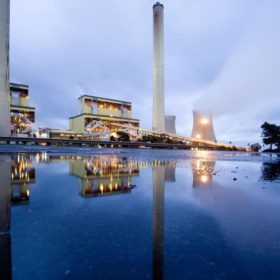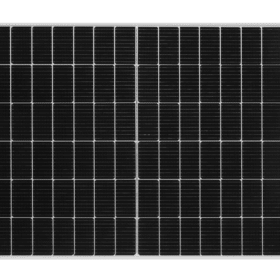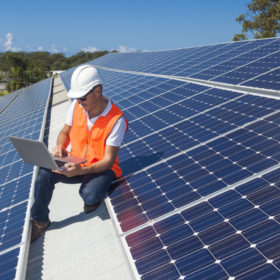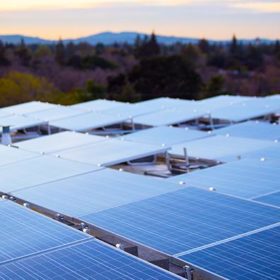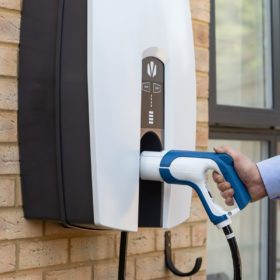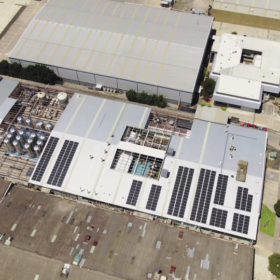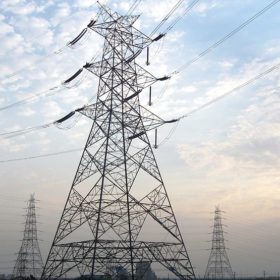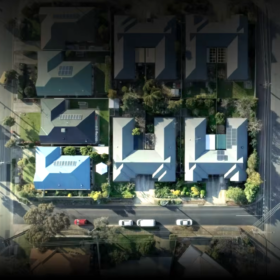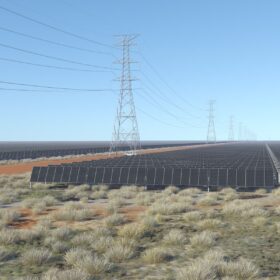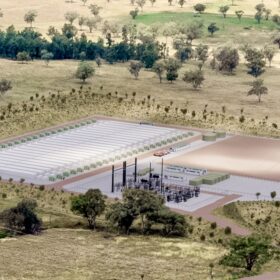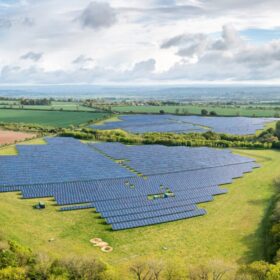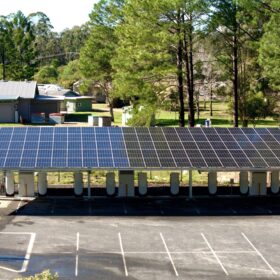Energy giant AGL reveals controversial partition plans
AGL Energy has been remarkably busy in recent months trying to make itself look like a giant ship on the turn in the energy transition and not the Ever Given cargo ship stuck in the old sands of time. Now, AGL has announced plans to partition itself into two separate businesses which it says will provide them with the freedom to pursue their own agendas, but not everyone is convinced.
JinkoSolar unwraps 415 W PV panel for rooftop applications
The new, Tiger Pro 54HC panel is based on a 182mm, 54-cell design and exhibits an efficiency of up to 21.3%. The manufacturer claims the new product is particularly suitable for residential projects in high snow or high wind load areas.
Small-scale solar becomes second biggest player in Australia’s renewable energy mix, as CEC reveals slate of overhauled records
The Clean Energy Council has released its annual Clean Energy Australia report, revealing a string of smashed records, as states, territories and businesses continue to ramp up renewable ambitions.
Q&A: Why bigger is better
Who says size doesn’t matter? The talk of the solar industry town at the moment is the increasing module size. Trina Solar is right in the thick of this revolution with the release of several larger format modules back-to-back in recent months. As pv magazine Australia gets ready to host a webinar with Trina Solar Australia this coming Thursday, we sat down with one of the company’s APAC directors, Andrew Gilhooly, to talk shop.
AGL teams up with Ovo to digitise energy management in Australian households
AGL has announced a joint venture with the UK’s Ovo Energy for exclusive Australian rights to its Kaluza smart energy platform. The partnership comes at a time when grid stability is a hot topic and energy management systems are a key tool for owners of rooftop solar to optimise their investment.
YouTube – a proven marketing platform to expand solar businesses
YouTube videos are becoming a vital part of consumers’ solar-buying journey, providing a unique opportunity for solar marketers. Marketing pro Rich Feola offers insights on how to use videos to boost your solar company.
Sunday read: The regulator’s wish is my export limitation
As distributed PV grows, new grid codes have scared installers across some markets. Network operators want to gain control over grid export, even of smaller arrays. Additions of new array controllers and special gateways could be costly putting speedy development of PV at risk. Fret not, says Fimer, as the Italy-based power-electronics manufacturer has placed the solution to the problem already inside its latest inverter range.
‘Concierge’ service for renewables aims to bridge education deficit by brokering clean energy deals
Australia’s first renewables brokering service, Teho, aims to tie together the disparate industry threads of solar, batteries, EVs and renewable energy retailers and simplify the path towards renewables for everyday people. Pv magazine Australia spoke to the two brothers behind the business, Jonathan and David Green (yes, that really is their surname), about the gap in the market they seek to tap.
Solar export tax proposal stirs immediate outcry, but AEMC insists ‘doing nothing is not an option’
The Australian Energy Market Commission, Australia’s energy rule maker, today released its draft determination on how to integrate energy technologies like solar and batteries into the electricity grid. In the draft, the Commission revived its proposal for a solar tax, immediately stirring backlash.
How to protect rooftop PV systems from fire risk
Dutch research institute TNO has released a series of guidelines to reduce fire hazards in rooftop PV installations. The study follows a series of fire accidents that occurred between 2018 and 2020 in the Netherlands, for which the main causes were identified.
